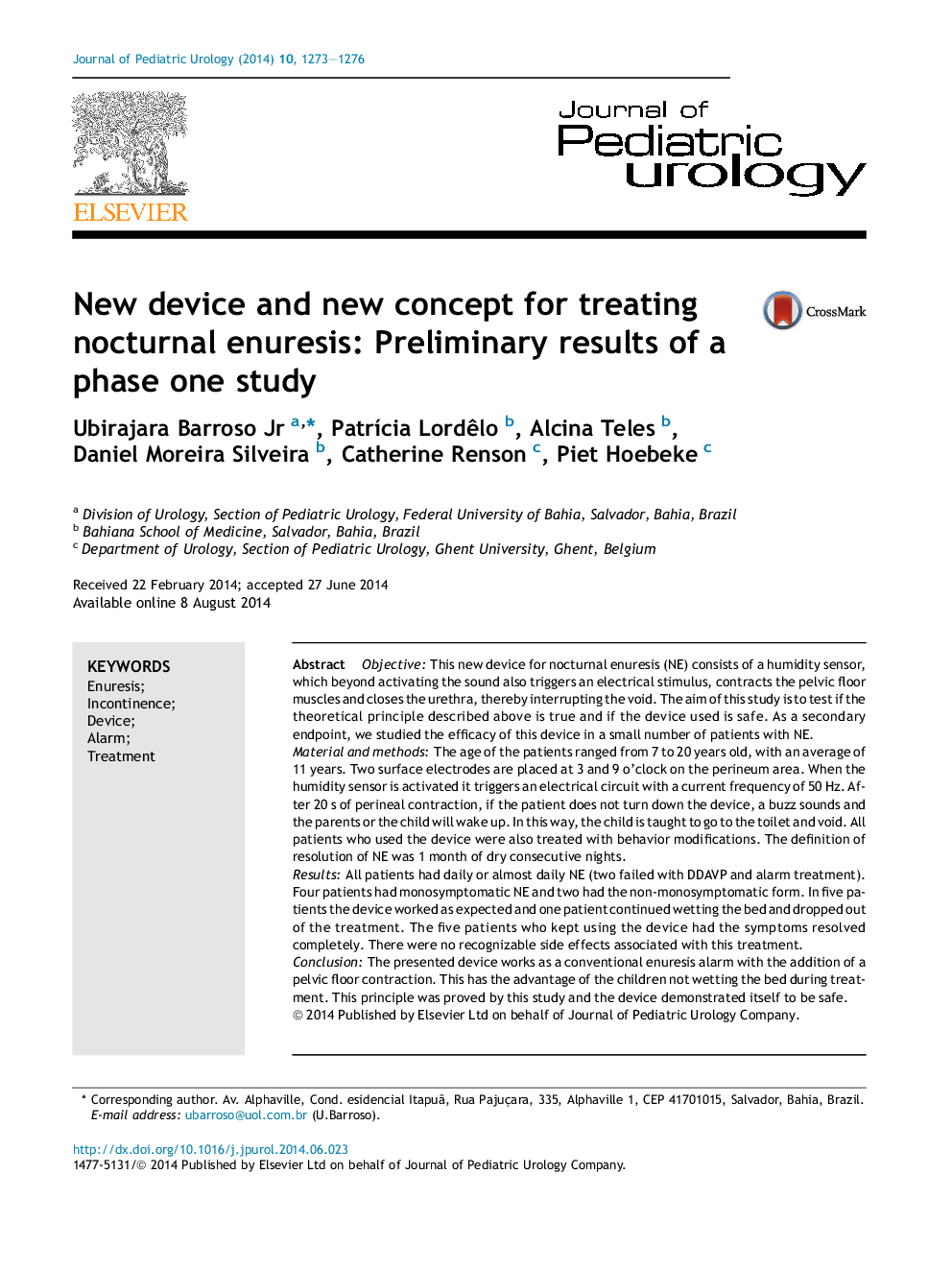| Article ID | Journal | Published Year | Pages | File Type |
|---|---|---|---|---|
| 6218422 | Journal of Pediatric Urology | 2014 | 4 Pages |
ObjectiveThis new device for nocturnal enuresis (NE) consists of a humidity sensor, which beyond activating the sound also triggers an electrical stimulus, contracts the pelvic floor muscles and closes the urethra, thereby interrupting the void. The aim of this study is to test if the theoretical principle described above is true and if the device used is safe. As a secondary endpoint, we studied the efficacy of this device in a small number of patients with NE.Material and methodsThe age of the patients ranged from 7 to 20 years old, with an average of 11 years. Two surface electrodes are placed at 3 and 9 o'clock on the perineum area. When the humidity sensor is activated it triggers an electrical circuit with a current frequency of 50Â Hz. After 20Â s of perineal contraction, if the patient does not turn down the device, a buzz sounds and the parents or the child will wake up. In this way, the child is taught to go to the toilet and void. All patients who used the device were also treated with behavior modifications. The definition of resolution of NE was 1 month of dry consecutive nights.ResultsAll patients had daily or almost daily NE (two failed with DDAVP and alarm treatment). Four patients had monosymptomatic NE and two had the non-monosymptomatic form. In five patients the device worked as expected and one patient continued wetting the bed and dropped out of the treatment. The five patients who kept using the device had the symptoms resolved completely. There were no recognizable side effects associated with this treatment.ConclusionThe presented device works as a conventional enuresis alarm with the addition of a pelvic floor contraction. This has the advantage of the children not wetting the bed during treatment. This principle was proved by this study and the device demonstrated itself to be safe.
